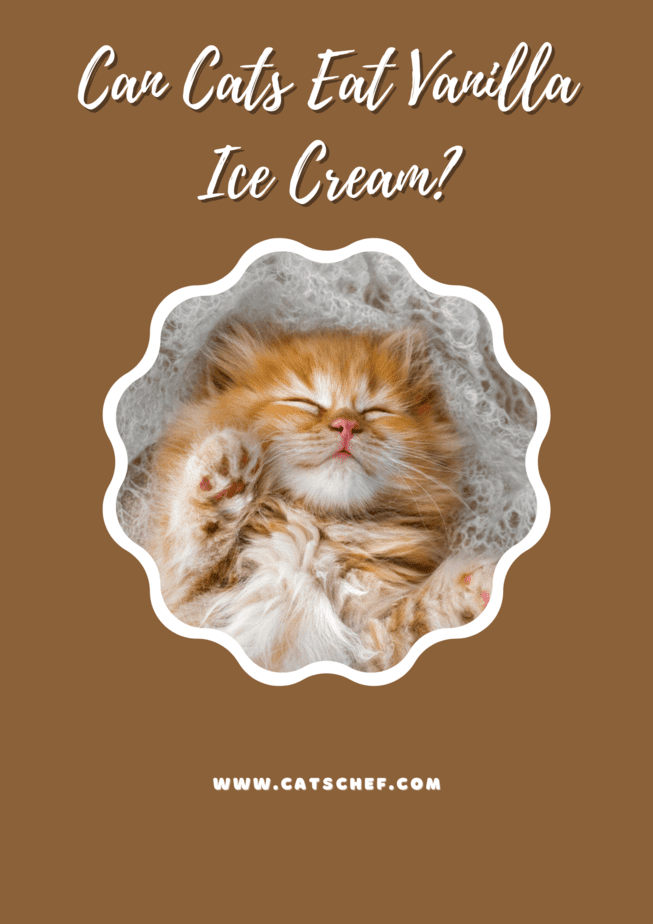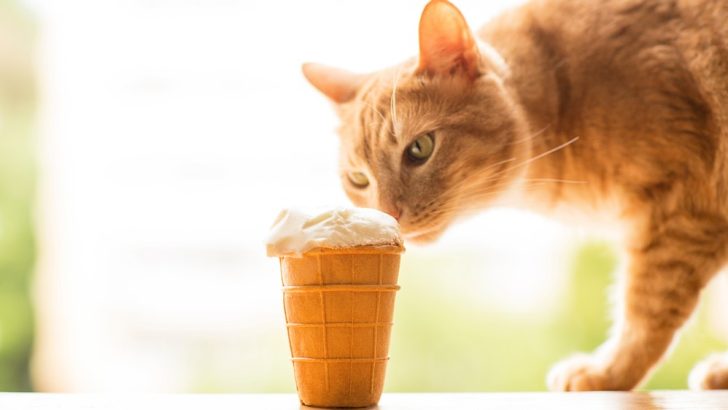There’s hardly anything better than a scoop of delicious vanilla ice cream. Except for maybe chocolate ice cream… Or even strawberry ice cream… You get the picture, and so does your four-legged friend because she keeps meowing in your direction. But can cats eat vanilla ice cream?!
You’re pretty sure you can give her a spoonful with no repercussions. But, she doesn’t seem to take no for an answer. She wants more and she wants it now. You have no other choice but to go online, look up “can cats eat vanilla ice cream” and hope for the best.
This must be your lucky day because the best seems to be exactly what you’re getting! According to our friends over at the ASPCA, a bit of vanilla ice cream is purrfectly safe for your furry friend.
You have nothing to worry about when you catch her licking the spoon after you’ve scoffed down an entire bucket of vanilla ice cream. Or helping herself to that blob of chocolate ice cream you spilled on the floor when you received an unexpected message from your crush.
But… There’s always a but when it comes to feeding your feline friend anything that isn’t supposed to be a regular part of her diet. Most human foods contain ingredients that can send her running to her litter box and vanilla ice cream doesn’t seem to be an exception.
Can cats eat ice cream safely?
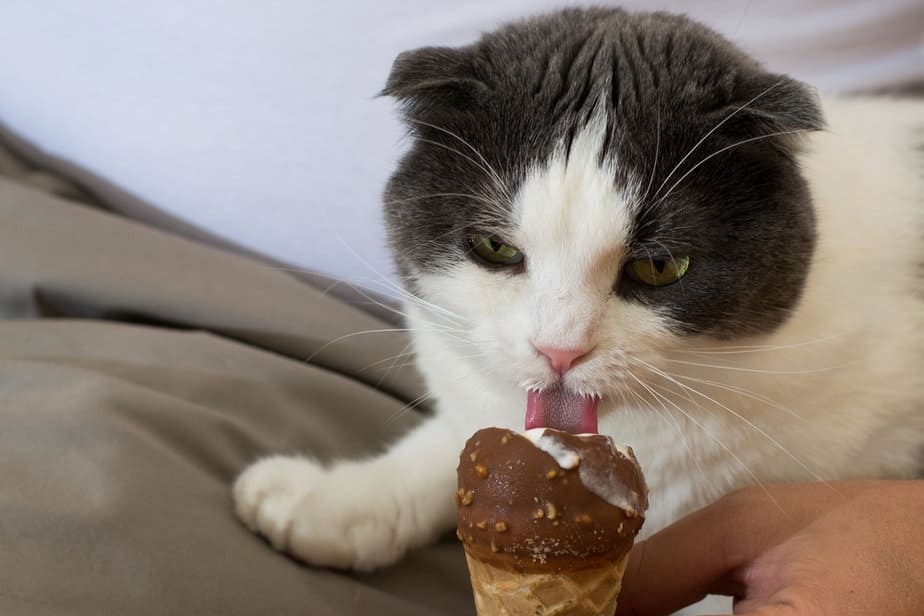
You can’t wonder whether cats can eat a particular kind of ice cream without wondering whether they can eat ice cream at all, right!? You don’t see a lot of brands making these types of treats. And, you certainly don’t see a lot of cats with a cone between their paws.
So, can cats eat ice cream? Is ice cream safe for cats? Or is ice cream bad for cats? Most cat owners would agree that this tasty treat doesn’t fall under the category of cat foods or cat treats that are considered a regular part of their feline’s diet.
You see, cats are carnivores. That means that they require heaps of meat, animal protein, and animal-sourced nutrients in their diet. Ice cream doesn’t have the nutritional value your cat needs. So, there’s pretty much no reason why she should consume it on a regular basis.
Cats can’t even taste sweet things because they weren’t supposed to feed off of them in the first place. They don’t have the necessary taste receptors so they can’t really detect anything that has a sweet taste.
And don’t even get me started on the fact that their digestive system isn’t equipped to break down the sugar (a.k.a. the carbohydrates) in ice cream.
Technically speaking, cats can eat ice cream. But, ice cream shouldn’t become a regular part of their diet. Too much ice cream can cause brain freeze (which isn’t fun for humans, either). And, it can also cause different digestive problems such as upset stomach, diarrhea, vomiting, and even food poisoning.
So, can cats eat vanilla ice cream?

Everything we mentioned in the previous couple of paragraphs applies to vanilla ice cream, too. A lick or two shouldn’t send your four-legged friend running to her litter box. Such a small amount of vanilla ice cream doesn’t contain enough of what would typically make your cat sick.
That being said, it’s important to underline that vanilla ice cream does contain an ingredient that’s considered toxic. And yes, we’re talking about the vanilla extract.
To your cat’s demise, the vanilla extract contains a bunch of ethyl alcohol (up to 34%). Ethyl alcohol can easily lead to alcohol poisoning even when consumed in smaller amounts. One lick of pure vanilla extract can leave your furry friend with severe symptoms of alcohol poisoning.
These symptoms include drowsiness, lack of coordination, and lack of consciousness. Additionally, you might notice symptoms that are typically recognized as digestive problems such as vomiting, diarrhea, and dehydration.
When we say that cats can eat vanilla ice cream, we’re talking about that tiny lick you give to your cat when she doesn’t want to walk away without her “you’re adorable” treat. Or when she doesn’t want to let you enjoy your bucket of ice cream without meowing until your ears fall off.
You get the gist of it, but you might be intrigued to find out more. What makes vanilla ice cream (and any other kind of ice cream) unfavorable to your four-legged friend? Why can’t your cat have a sweet treat every now and then? Why is vanilla ice cream bad for your cat’s health?
3 reasons why vanilla ice cream isn’t great for your cat
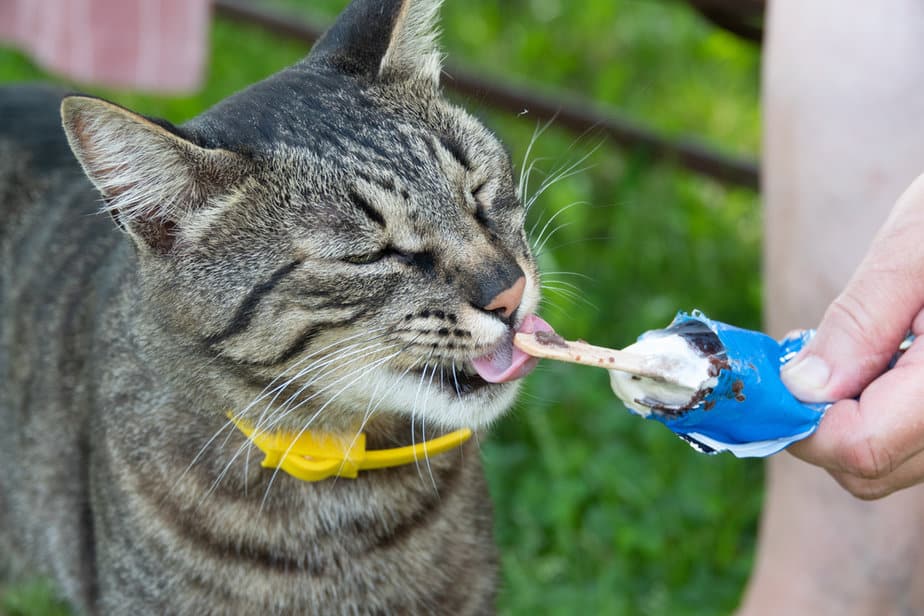
Cats can eat vanilla ice cream, but… There always seems to be a but when we’re talking about feeding our furry friends with different human foods. Vanilla ice cream contains too many ingredients that might harm your cat, so…
You might want to skip out on this one and find a better alternative. As mentioned before, a little lick shouldn’t be the cause for panic. But, you certainly want to avoid feeding your cat large amounts of ice cream.
After all, this tasty treat contains a lot of sugar, artificial sweeteners like Xylitol, and a bunch of other things you can read about when you scroll down.
1. Propylene glycol
While these two words might seem like something you skip because you don’t even want to attempt to read them… They are incredibly important when we’re talking about reasons why cats can’t eat vanilla ice cream.
You see, propylene glycol is a “safe” antifreeze that’s typically used to prevent ice crystals from developing in your ice cream. While that’s all great and dandy, propylene glycol can lead to poisoning in cats! It has even been banned from being used in cat food.
When your feline friend eats too much of something that contains this ingredient, she might experience symptoms such as weakness, loss of appetite, fever, skin discolorations, urine discolorations, and fever.
Not only that, but when left untreated these symptoms might result in anemia (Heinz body anemia, in particular), or even cause irreversible damage to your cat’s nervous system.
2. Lactose
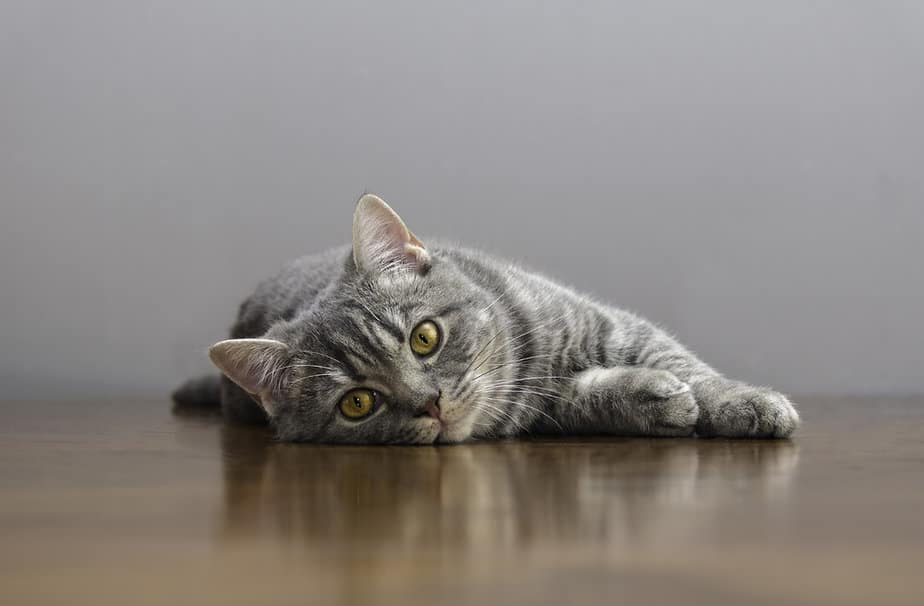
Here’s something you weren’t expecting to read: cats are lactose intolerant! Most cats’ digestive system doesn’t contain the lactase enzyme. It is responsible for breaking down and processing lactose in everyday dairy products.
Vanilla ice cream is typically made with whole milk which contains the highest amount of lactose among all other dairy products. What happens when your lactose-intolerant cat eats a bunch of vanilla ice cream?
Well, the most common symptoms include upset stomach, vomiting, and diarrhea. While those symptoms don’t sound as dangerous as damage to your cat’s nervous system, they’re still pretty uncomfortable.
So, next time you’re planning on eating an entire bucket of ice cream in front of your curious creature, you might want to opt for dairy-free ice cream. Or skip out on this tasty treat altogether.
3. Vanilla
Yes, we’ve talked about this in one of the previous paragraphs, but it doesn’t hurt to talk about it again. Vanilla extract that’s typically found in vanilla ice cream is considered toxic to cats.
Ethyl alcohol, one of the essential ingredients of vanilla extract, can easily lead to alcohol poisoning. It goes without saying that alcohol poisoning sounds like something you don’t want your furry friend to experience.
Granted, she would have to consume about a teaspoon of ethyl alcohol to experience any symptoms of alcohol poisoning, but it’s better to be safe than sorry.
Can kittens eat vanilla ice cream?

Technically yes, but avoid feeding it to your cat on a daily basis. There’s nothing wrong with letting your kitten lick the spoon you used to eat your vanilla ice cream. You could even let her have an entire spoonful. But, this tasty treat isn’t something you want her to consume regularly.
On the other hand, kittens aren’t lactose intolerant. Your kitten might have a better time digesting vanilla ice cream than most cats. But, you shouldn’t forget about everything else we mentioned beforehand. As a general rule of thumb, consult with your vet before introducing new foods to your cat’s (or kitten’s) diet.
Can cats eat chocolate ice cream?
Vanilla ice cream might have vanilla extract, but chocolate ice cream has theobromine and caffeine. These two ingredients can cause even more harm to your cat’s health. So, it’s only natural to assume that cats can’t eat chocolate ice cream.
There’s no way of telling whether a single lick of chocolate ice cream would send your cat to the emergency animal center. But, who’s to say that she won’t scoff down the entire bucket while you’re not looking!?
Some of the side effects of consuming chocolate are vomiting, diarrhea, seizures, and even cardiac failure or coma. Chocolate ice cream isn’t likely to kill your cat, but it’s certainly likely to make her incredibly ill for a couple of hours.
Let’s just say it’s better to stay away from this tasty treat.
Cats can eat vanilla ice cream, but…
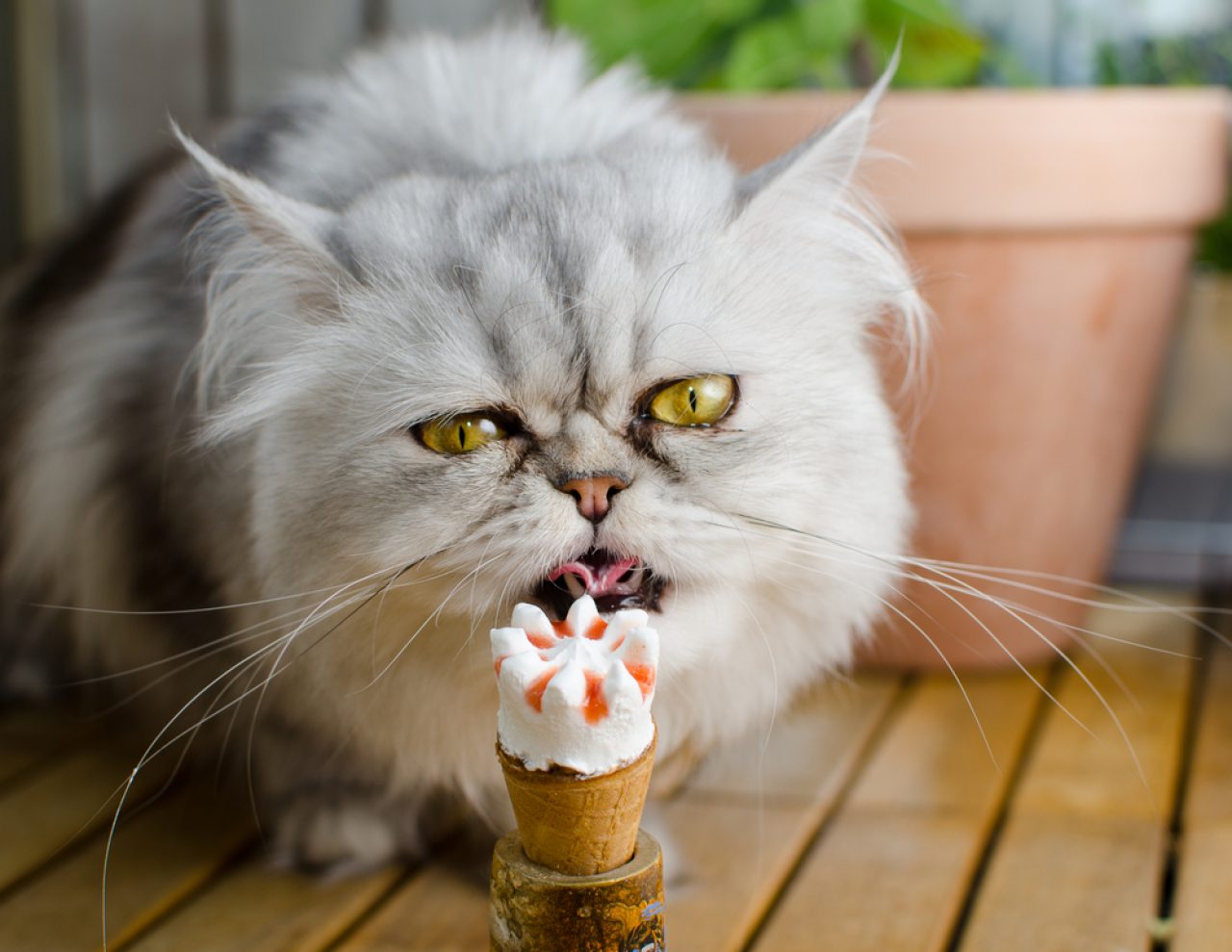
You shouldn’t make any significant changes to your cat’s diet unless you consult with your vet beforehand. There are so many human foods that aren’t safe for your four-legged friend, and it’s better to be safe than sorry.
Once again, a lick of vanilla ice cream shouldn’t cause any harm to your cat. But, you can always offer her some plain, low-fat yogurt or sour cream if feeding her ice cream makes you nervous. Trust me, there are so many ice cream alternatives available on the market.
You don’t have to risk getting your feline friend in trouble because of a single lick of vanilla ice cream!
